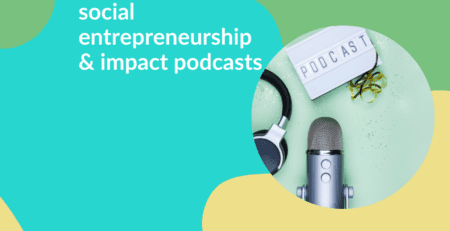How to manage the details of impact retail to serve your greater vision
How can impact retailers afford to incorporate global supply chains, sustainable packaging, and corporate social responsibility in ways that help their businesses grow while reflecting their ethical standards?
The answer: when it comes to competitive edge, new studies from NYU’s Center for Sustainable Business show that sustainability is king.
The real question, then, is how to build—or shift—your e-commerce business to embrace the socially-conscious and environmentally-friendly practices that will position you for growth and success in the years to come.
The Foundation: An Ethical Supply Chain
As impact retail takes hold, companies embracing ethical practices attract more customers—and are also subject to greater scrutiny. Consumers are more attentive to the sourcing and labor that bring products to their doors.
Maintaining an ethical supply chain is key. Two major concerns in this area are employing fair labor practices and the ethical sourcing of raw materials to protect natural resources. Transparency throughout global supply chains can seem daunting but is possible.
KnowTheChain is an organization that helps businesses recognize and address forced labor in their supply chains, and the U.S. Department of Labor’s Comply Chain app can help companies strengthen their compliance around labor concerns. Both help ethical businesses find and remedy any human rights issues that might exist in bringing their products to market.
Additional manufacturing concerns, like the use of ethically-sourced materials, require companies to find business partners that hold similar values and ethical standards. One resource for companies wanting to find such business partners is OpenText’s Global Partner Directory which holds over 550,00 profiles on potential trading partners.
Knowing who you are working with and taking steps to maintain transparency throughout the process are the beginnings of building a supply chain that will support, rather than undermine, your business’ public commitments.
Next Steps: Sustainable Packaging
Once your product is produced in a way that supports your company’s ethical goals, your next step is finding the best option for sustainable packaging.
There are many options for eco-friendly packaging, and the options grow by the day. We share new examples we discover in the news every week in our Impact Retail newsletter.
When choosing the packaging solutions that will work best for you, it’s important to consider whether you’d like your packaging to be reduced, reused, or recycled because different packaging materials lend themselves to different opportunities.
For some businesses, the use of recycled materials makes the most sense. Recycled cardboard, for example, is environmentally-friendly, and is a go-to solution for many. When you are making your choices, be sure to research your options to ensure that the material you choose aligns with your broader vision. The Sustainable Packaging Coalition and the Forest Stewardship Council are great places to start.
Different industries allow for different options as well. Food and beverage companies have options from NatureFlex, TIPA, and KraftPak among others that are fully compostable. Similarly, materials designer Margarita Talep has used red-algae to make single-use plastic bags and other packaging that holds up to shelf life but breaks down quickly after use.
Other types of sustainable packaging are those that can be repurposed after their initial use. Companies that utilize heartier boxes or glass containers for delivery ensure that their packaging is not just used once and then sent to the landfill.
As in all things that bring a competitive edge, creativity, and keeping an eye on which options work best for your business is key.
The Last Mile: Reducing Your Carbon Footprint
One of the greatest hurdles for most impact retailers is finding ways to get products to convenience-driven customers while also minimizing environmental harm.
For many, the biggest obstacle is the “last-mile” of e-commerce deliveries—the last step in fulfillment from the company to the customer. In our recent GoodCarts Guide: 13 Shopify Apps to Boost Sales and Impact Mission, we researched the best Shopify apps for addressing carbon footprint concerns.
Along with apps that benefit impact retail through cause marketing and donations at check-out, the Guide provides options for integrated carbon-offsetting in every purchase, click & collect strategies, and ways to support reforestation, among others.
The Takeaway: Corporate Social Responsibility is Key
The products we envision as impact retailers are products that allow consumers to use their purchasing power to create social impact. In order to really create change, though, we need to consider our products from conception through delivery.
Ethical supply chains, sustainable packaging, and carbon-neutral delivery are critical when we desire to provide an environmentally-friendly product from start to finish. Creative approaches and innovation are vital to ensuring the ethics of your environmental philosophy stay centered in your business. What new solutions have you found?











